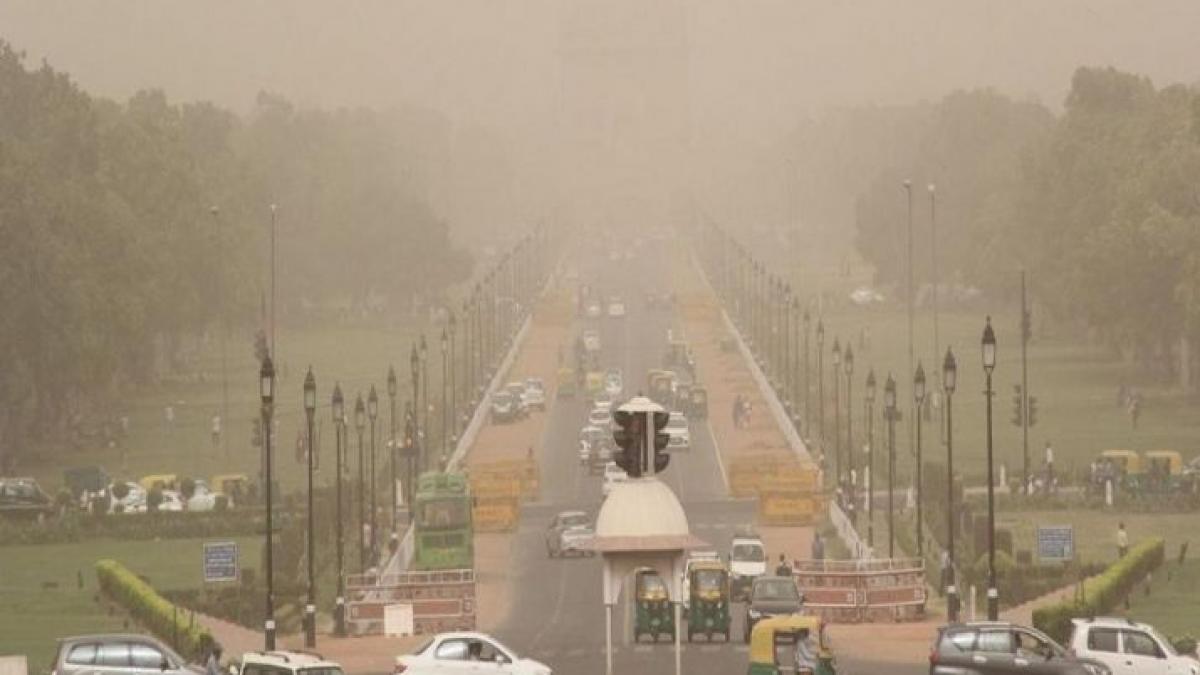New Delhi: On Thursday, the air quality in Delhi reached alarming levels, classified as ‘dangerous’ and ‘hazardous’. According to the weather agency aqicn.org, Delhi’s Anand Vihar recorded an air quality index (AQI) of 999, while Noida’s Sector 62 registered a reading of 469. Many areas in Delhi reported AQI values above 500, as per aqicn.org.
Maroon flags, indicating “hazardous” air quality, covered most parts of the National Capital Region (NCR).
The deteriorating air quality in Punjab can be attributed to low wind speeds and ongoing stubble burning. Even with a high temperature of 32.3 degrees Celsius on Wednesday, Delhi’s air quality remained in the “very poor” category for the fifth consecutive day.
The Delhi High Court, upon being informed of its responsibility to maintain air quality, directed the forest department to take action to improve the Air Quality Index (AQI) in the capital.
During discussions about establishing an alternative forest in Delhi and filling departmental vacancies, Justice Jasmeet Singh observed that children were developing asthma due to breathing contaminated air.
Early morning walkers in Delhi reported that breathing had become more difficult than it was during the summer. At 7 am, the AQI for Pusa and the Delhi University area stood at 616 and 571, respectively, indicating “very poor” conditions.
Gurugram’s AQI was measured at 323 (very poor), while Noida’s was at 523 (extremely poor).
To combat pollution, a 15-point winter action plan is being implemented incrementally, as stated by Delhi Environment Minister Gopal Rai in a statement made last week.
Health experts are expressing concerns about the potential increase in asthma and respiratory issues, particularly among children and the elderly.
Delhi Chief Minister Arvind Kejriwal had previously announced a 15-point winter action plan to address pollution stemming from vehicles, biomass burning, dust, and other sources. This plan is now being gradually implemented on the ground to reduce pollution in the national capital, as per Rai’s statement.
The ‘Red Light on, Gaadi off’ campaign, launched on October 26, aims to reduce pollution from vehicles, a major contributor. Data shows that particulate matter (PM) 10 has decreased, but PM2.5 is on the rise in the AQI, indicating an increase in pollution from vehicles and biomass burning.
Over the past week, Delhi’s air quality has steadily deteriorated, and on Wednesday, the Municipal Corporation of Delhi (MCD) allocated Rs 20 lakh per zone to address air pollution.
The AQI classification remains as follows: 0–50 = “good,” 51–100 = “satisfactory,” 101–200 = “moderate,” 201–300 = “poor,” 301–400 = “very poor,” and 401–500 = “severe.”


